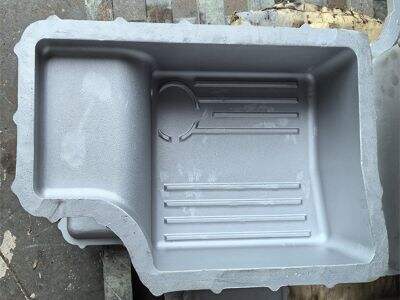There are quite a few different ways that you can make cast iron parts. The most general approach is called~~ sand casting. Sand casting Sand casting is a type of molding that uses moist clay bonded sand. Unit mold process with low degrees of freedom, many high qualities credit, simple operation. While this method is cost-effective to some extent, how good a choice does it make in terms of accuracy and scalability?
Benefits and cost analysis of sand casting in comparison with the other cast iron processes is discussed here.
Sand casting is a preferred process for producing cast gray iron parts One of the reasons that sand casting is so popular when manufacturing cast iron products, because it's one of the cheapest ways to produce goods. Sand and clay are cheap materials for sand casting Furthermore, sand casting molds are easy and relatively cheap to make. As a cost-saving measure for cast iron components, by and large, sand-casting could possibly be the better choice.
When is sand casting more accurate than other cast iron production methods?
Of course, while sand casting is reasonably affordable, it may not be appropriate in all cases where accuracy is concerned for cast iron parts. Molds used in sand casting can make the final part have defects. What this means is that the parts may also not be as accurate as desired for a certain application. By comparison, other ways of manufacturing cast iron parts, such as die casting; tend to be more precise and accurate.
Scale sand casting in relation to other cast techniques
Scalability is another thing to bear in mind when choosing a method for manufacturing cast iron components. Scalability: How easily a process can be scaled up or down to meet different production requirements. This is where sand casting becomes a scalable option due to the fact that this technique allows creation of parts in almost any size and quantity. Because of this sand casting is ideal for companies that require the ability to change molds quickly and have to produce a wide range of cast iron components.
Cost-effective, accurate and scalable as compared to other cast iron processes a comparative study with sand casting.
When analyzing which process is best for making grey cast iron parts, these factors should be put into perspective: cost, accuracy (closeness to the final part geometry), and scalability. Sand casting may well prove to be inexpensive, but with possible penalties on precision. Further, sand casting can be scaled-up, but parts may be limited in size and complexity. Comparing Sand Casting and Other Cast Iron Processes Studying sand casting against the features of other cast iron processes can help companies determine which method best fits their requirements.
Pros and Cons of Sand Casting vs. Other Manufacturing Methods for Cast Iron Components
To conclude, sand casting has become a viable option for cast iron parts both in terms of cost-effectiveness and scale. Nevertheless, the accuracy of method is not always as the highest compared to other techniques. For businesses looking to manufacture cast iron parts with ultra precision, it may be better off looking into the die casting process instead. This way, companies can evaluate the strengths and weaknesses peculiar to each method to determine which will be most beneficial for their individual manufacturing process.
In short, although sand casting is used for the production of cast iron grey parts, it may be a better solution according to cost, precision and ability to do mass production. By carefully considering these factors, companies can make well-informed decisions as to which approach is optimal for their use-case. Quality Tips: Pengxin is dedicated to producing top-notch cast iron components and we cooperate together with the customers to know which manufacturing process should be adopted for their specific needs.
Table of Contents
- Benefits and cost analysis of sand casting in comparison with the other cast iron processes is discussed here.
- When is sand casting more accurate than other cast iron production methods?
- Scale sand casting in relation to other cast techniques
- Pros and Cons of Sand Casting vs. Other Manufacturing Methods for Cast Iron Components

